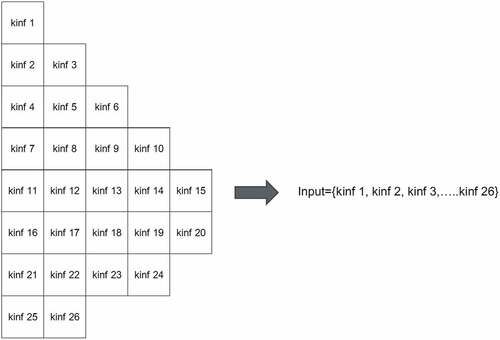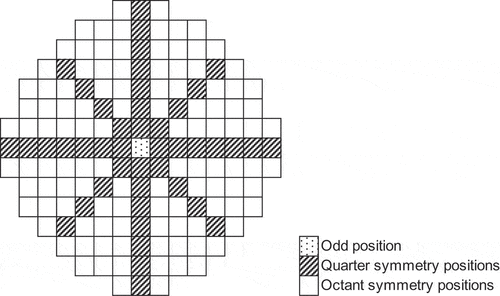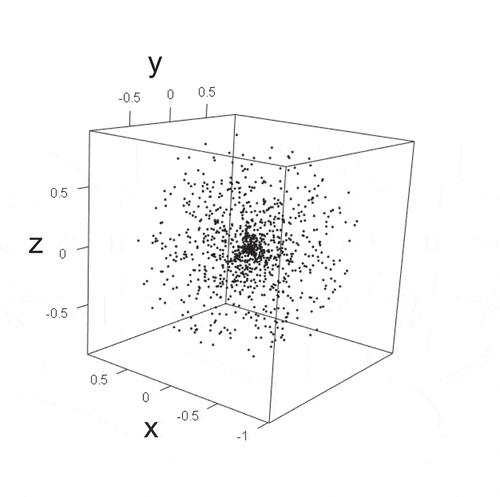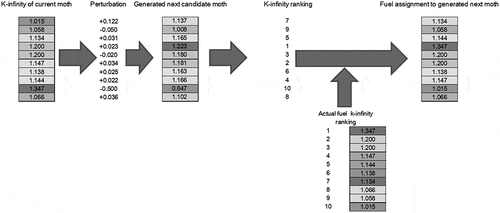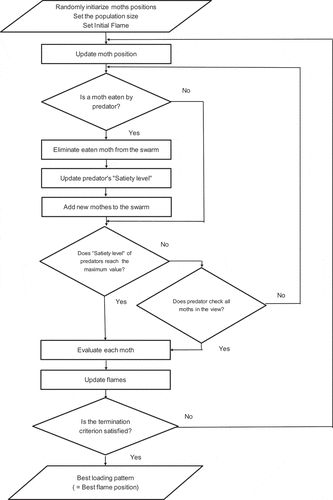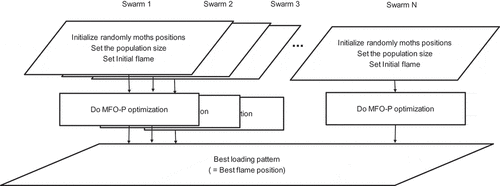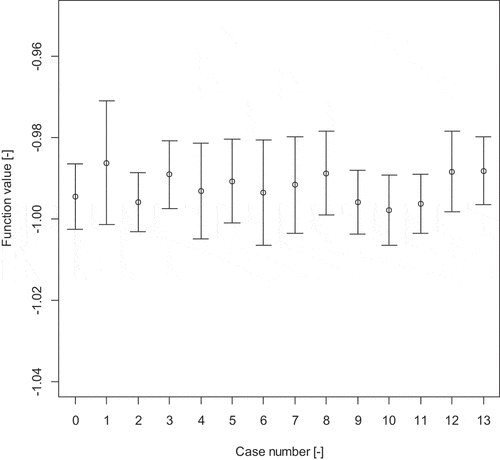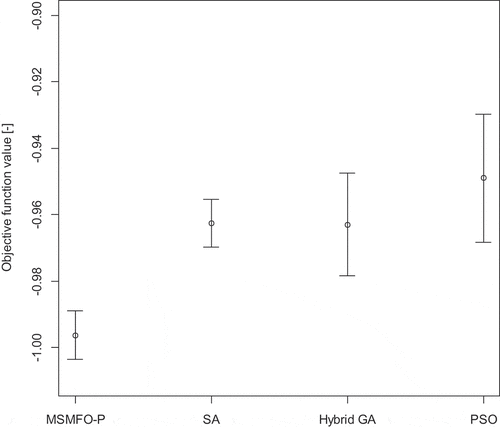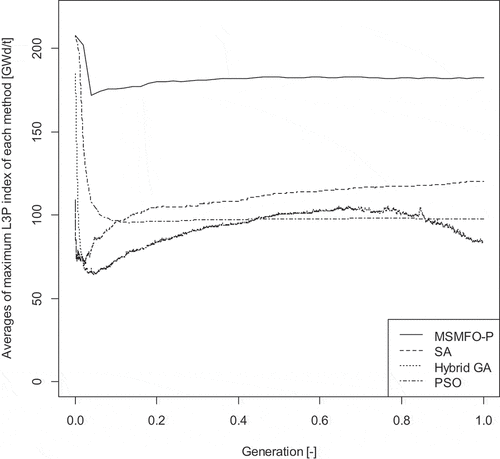Figures & data
Table 1. Fuel inventory used for optimization calculations.
Table 2. Calculation conditions used in the sensitivity analysis.
Table 3. Calculation conditions of the conventional optimization methods.
Table 4. Optimization results of MSMFO-P.
Table 5. Optimization results of SA.
Table 6. Optimization results of Hybrid GA.
Table 7. Optimization results of PSO.
Figure 9. Example of generated loading patterns by (a) MSMFO-P, (b) SA, (c) Hybrid GA, (d) PSO. Value in the assembly indicates k-infinity.
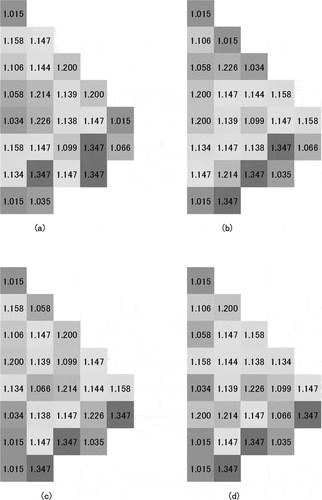
Table 8. Number of L3P loading patterns in which fresh fuel assemblies without Gd are loaded core inboard in 10 trials.
Table 9. Average and standard deviations of the L3P indexes in the last generation of MFO, MFO-P, MSMFO, and MSMFO-P.
Table 10. Average and standard deviations of the objective function of MFO, MFO-P, MSMFO, and MSMFO-P.

